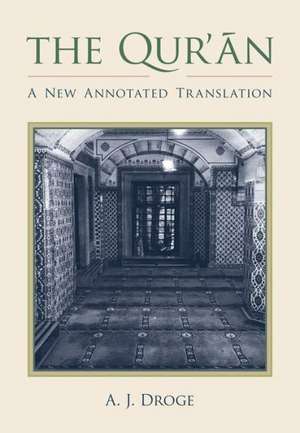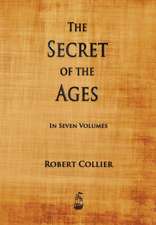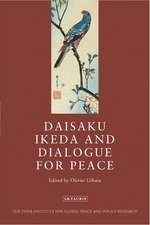The Qur'an: Comparative Islamic Studies
Traducere de Arthur J. Drogeen Limba Engleză Paperback – 31 mai 2013
| Toate formatele și edițiile | Preț | Express |
|---|---|---|
| Paperback (1) | 370.71 lei 6-8 săpt. | |
| Equinox Publishing (Indonesia) – 31 mai 2013 | 370.71 lei 6-8 săpt. | |
| Hardback (1) | 733.01 lei 6-8 săpt. | |
| Equinox Publishing (Indonesia) – 31 mai 2013 | 733.01 lei 6-8 săpt. |
Preț: 370.71 lei
Nou
Puncte Express: 556
Preț estimativ în valută:
70.93€ • 73.92$ • 58.73£
70.93€ • 73.92$ • 58.73£
Carte tipărită la comandă
Livrare economică 03-17 aprilie
Preluare comenzi: 021 569.72.76
Specificații
ISBN-13: 9781845539450
ISBN-10: 1845539451
Pagini: 488
Ilustrații: black & white illustrations, maps
Dimensiuni: 188 x 244 x 30 mm
Greutate: 1.18 kg
Editura: Equinox Publishing (Indonesia)
Seria Comparative Islamic Studies
ISBN-10: 1845539451
Pagini: 488
Ilustrații: black & white illustrations, maps
Dimensiuni: 188 x 244 x 30 mm
Greutate: 1.18 kg
Editura: Equinox Publishing (Indonesia)
Seria Comparative Islamic Studies
Notă biografică
A. J. Droge is the translator of The Qur'an: A New Annotated Translation (Equinox, 2013), and the author of Homer or Moses? Early Christian Interpretations of the History of Culture and A Noble Death: Suicide and Martyrdom among Christians and Jews in Antiquity (with J.D. Tabor).
Cuprins
Preface The Myth of the Book Text and context An 'inspired' Prophet A Book 'from heaven' Who wrote the Qur'an? A Qur'an from Cairo About this translation Guide to Further Reading Glossary of Key Names, Terms, and Abbreviations Timeline Maps The 114 suras of The Qur'an Index to the Qur'an
Recenzii
'The major benefit of this meticulously crafted translation is its extensive set of intratextual and intertextual references. The former cover all the major terms used in the Qur'an, providing the Arabic original word in a footnote, with usages, whether parallel or variant, from other Qur'anic chapters. The latter display an intimate engagement with both the Hebrew Bible and the New Testament, as well as a range of secondary literature that can be seen to supplement brief or cryptic Qur'anic references. Both sets of references make this an indispensable companion or guide book for reading, engaging and studying the Qur'an. A further, attractive feature of Droge's annotations is the highlighting of subsets or pericopes of each chapter in the footnotes; the reader, by glancing through these bold highlighted passages, can quickly surmise what are the chief elements, as also their relationship, within each chapter. Even the most seasoned scholar, and the most devout Muslim, will learn from Droge's annotated translation what an expanded field of "apparently unique linguistic material" (Jones) the Qur'an provides to its listeners, readers and inquirers. It is a treasure trove of both familiar and novel elements of the Noble Book. In sum, Arthur Droge is to be commended for the extraordinary Herculean effort.' Bruce B. Lawrence, Duke University At long last, a version of the Qur'an that is willing to introduce the reader to the complexities of the historical formation and secular interpretation of this important text. Droge is to be congratulated for making accessible to the student of religious studies a critical apparatus, something that is all too often ignored in other translations. Aaron Hughes,University of Buffalo Several new translations of the Qurʾan have appeared over the past 20 years or so. None, however, have attempted the depth and breadth of annotation of the entire text that Droge's work provides. Readers coming to the Qurʾan with a desire to compare the scripture to the Biblical text will especially find the extensive citation of parallel passages to be of interest. Droge has provided lucid explanations of unclear passages and significant variant readings, making the ambiguities and challenges of the Qurʾan open to all curious readers. The translation itself benefits from the work of previous translators in conveying the sense of the Arabic original while emphasizing a consistent and straight-forward rendering into English. Andrew Rippin, University of Victoria

























